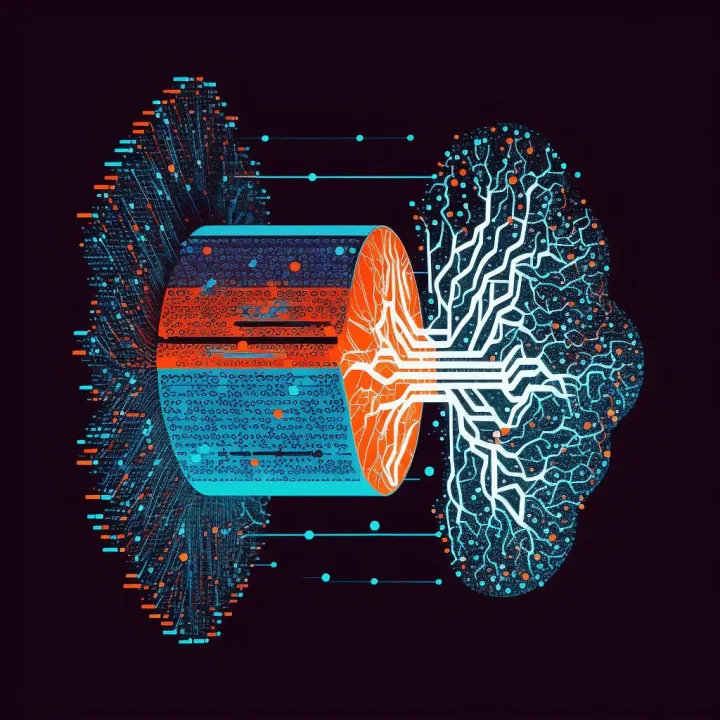The Rise of Autonomous Testing: Driving Efficiency and Accuracy in the Software Development Lifecycle
Explore how the surge of autonomous testing is revolutionizing the Software Development Life Cycle. Discover how it enhances efficiency, precision, and gives you a competitive edge in the tech marketplace.

In the ever-evolving technosphere, we find ourselves immersed in autonomous testing, a cutting-edge paradigm shift in how we approach software examination. Fueled by the intellectual might of artificial intelligence (AI) and the predictive prowess of machine learning (ML), this avant-garde methodology has taken the helm in the automation of the testing process.
Enterprises adopting this revolutionary approach are reaping the benefits of amplified efficiency and high accuracy in their software vetting endeavors. This, in turn, liberates invaluable resources, allowing them to pivot their attention to alternate segments of the software development lifecycle (SDLC). Furthermore, such resource allocation optimizes operational workflows, fostering a conducive environment for innovation and growth in the digital era.
Definition of autonomous testing
Behold, the grand paradigm of autonomous scrutiny, an illustrious incarnation of software analysis, harnesses the profound capabilities of Artificial Intelligence and Machine Learning to breathe life into the typically laborious chore of the testing procedure. Tools wielding the banner of autonomous examination can, with uncanny perception, discern lurking malfunctions, bravely carry out the sequence of test instances, and then, with uncompromising honesty, lay bare the outcomes of these trials.
Imagine the liberation this offers to organizations! It augments the precision and velocity of their software validation process, emancipating precious workforce and intellectual resources to be strategically redeployed to other Software Development Life Cycle battlefronts. Undeniably, autonomous testing is a revolutionary force, catalyzing a seismic shift in the modus operandi of software quality assurance.
Importance of efficiency and accuracy in the SDLC
Efficiency and accuracy are two of the most important factors in the SDLC. Efficient testing can help organizations save time and money, while accurate testing can help to ensure that software is released without defects. Autonomous testing can help organizations improve both efficiency and accuracy in their software testing.
Overview of the rise of autonomous testing
Over time we have seen different methods employed in software development processes, like manual checks or scripted automation tests, which have been prone to human error & slower turnaround times. As technology advances, so do our methods for development & quality assurance, such as autonomous testing. This method fully automates all aspects of the quality assurance process & it's gaining widespread acceptance primarily due to improvements in AI and ML capabilities leading to faster, more precise results than before, making it favorable for most SDLCs with increasing usage expected across organizations soon enough, according to tech experts worldwide.
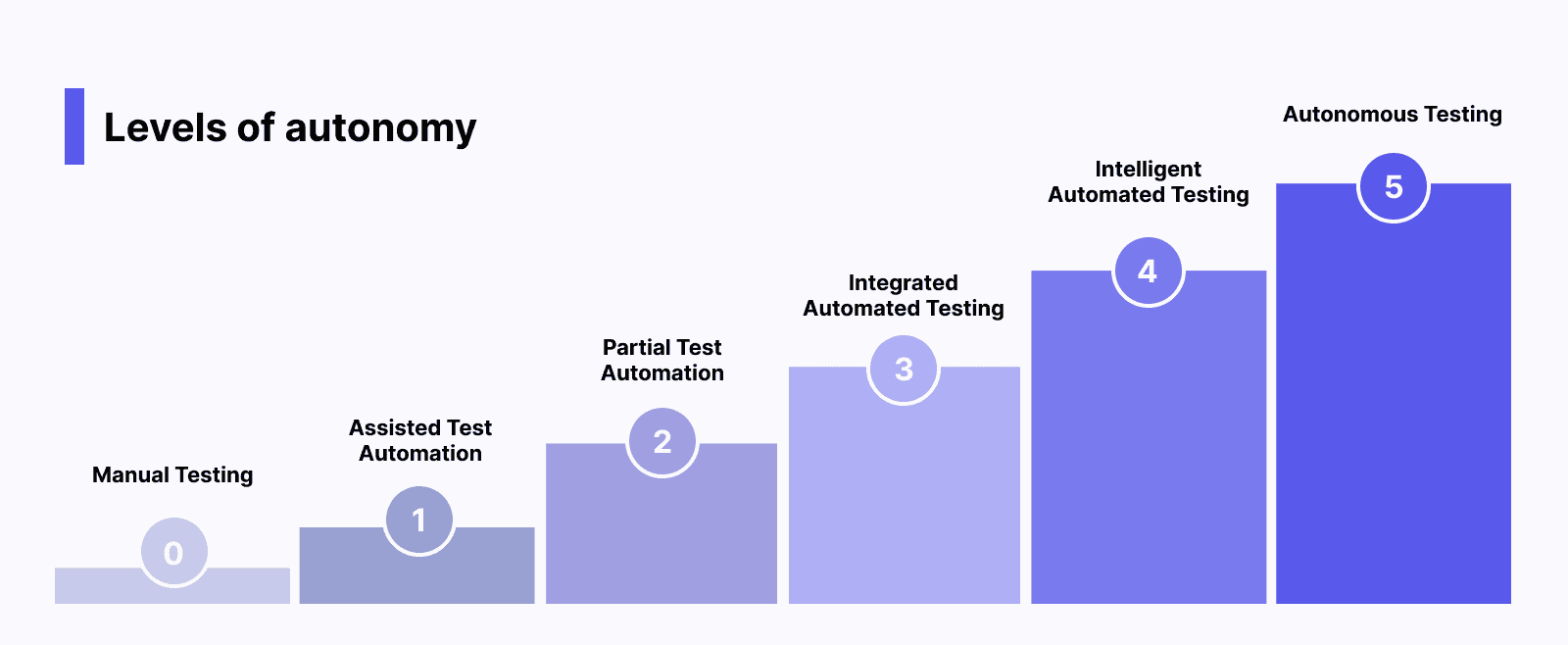
Automated Vs Autonomous Testing
Automated testing and autonomous testing are two different practices in software testing. Automated testing uses tools to achieve the desired result with a record-and-play approach. On the other hand, autonomous testing creates and executes tests without human intervention via application blueprints.
Autonomous testing is a higher level of automation for automation testing and is often used in reference to AI technologies. While automated testing can reduce fatigue and increase productivity, autonomous testing takes less training to perform the test. In addition, autonomous testing can create a test suite autonomously without human intervention, but independent testing is impossible.
Automated testing is a practice that uses automated testing tools to achieve the desired result. In contrast, autonomous testing is a practice that creates and executes tests without human intervention via application blueprints, often using AI technologies.
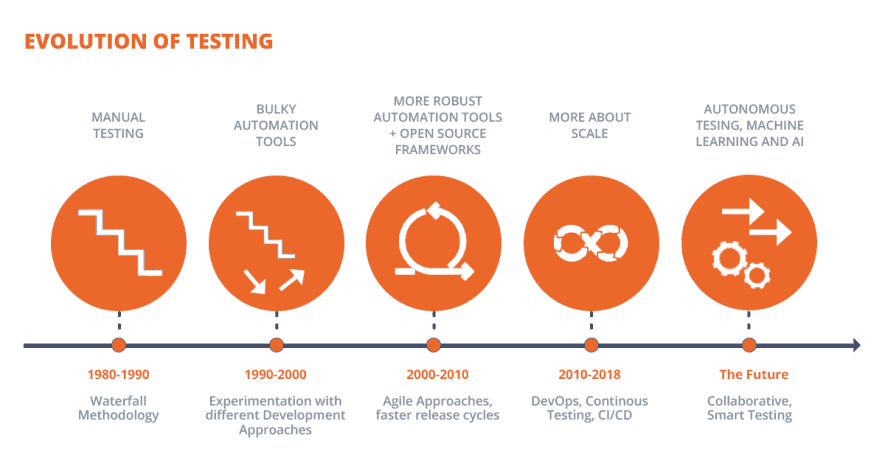
The Need for Autonomous Testing in the SDLC
Developing great software takes time and dedication from an entire team of experts. Making sure everything goes smoothly from start to finish and users get what they need out of it, in the end, requires using disciplined processes like the software development life cycle (SDLC). The SDLC includes five essential phases:
- Requirements gathering
- System design
- Implementation
- Testing
- Deployment
This comprehensive approach to creating quality applications or programs from concept through post-deployment updates brings developers closer to success every time they start on something new.
Testing the software is an integral part of SDLC that guarantees compliance with user specifications and eliminates glitches. However, manually checking for defects could be prone to errors and consume much time.
Manual testing comes with numerous setbacks, such as:
- Lack of automation
- Human error
- Time constraints
- Cost constraints
For software development predicaments, an efficient solution is utilizing autonomous testing. With the utilization of artificial intelligence and machine learning, this form of testing automates test processes, lowering costs and enhancing results accuracy. Implementing such tests within the software development life cycle (SDLC) has numerous benefits, which includes:
- Increased speed
- Improved accuracy
- Reduced costs
- Increased efficiency
- Improved quality
To keep up with today's rapidly changing technology landscape, developers must find ways to create high-quality applications quickly and at low cost. But how can they accomplish both goals simultaneously?
The answer may lie in autonomous testing - a powerful tool that automates much of the testing process enabling developers to improve their applications' quality while saving time and money during development. With complex software becoming more prevalent daily, this technology will undoubtedly become even more important in years to come.
Challenges of manual testing
The manual testing process can be arduous as its often time-consuming and susceptible to errors. With so many combinations of inputs and outputs, possibly identifying potential defects is an uphill battle that requires immense attention to detail but may result in some critical issues going unnoticed. Adding complexity is the growing complexity of software applications.
Growing complexity of software applications
Nowadays, software applications are becoming more complex than ever with their multitudes of interconnected components that interact in myriad ways; this creates an additional challenge for testers trying their best to identify any potential errors or flaws amongst all those possibilities — time & Cost Constraints During Software Development Life Cycle (SDLC).
Time and cost constraints in the SDLC
Developers working on creating new software already have a lot on their plate – they need things done quickly while sticking tightly within tight budgets too! As such, there's often little room left over for thorough manual testing despite its importance - which leaves us facing a big problem.
The good news is that autonomous testing technology could address these challenges by automating the entire testing process. With less time and lower costs, this approach can help optimize the accuracy of results.
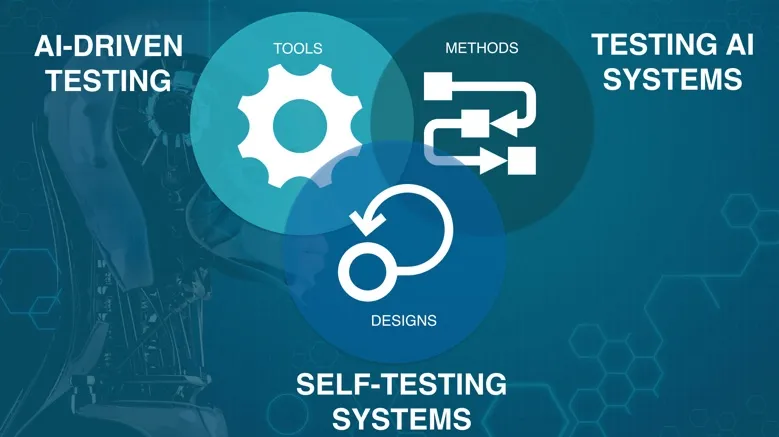
Understanding Autonomous Testing
The landscape of software testing is constantly evolving with new approaches emerging all the time - one such method being autonomous testing. By utilizing advanced technologies like artificial intelligence (AI) and machine learning (ML) this technique can automate each step involved in the process; everything from developing test cases to executing them analyzing outcomes and compiling detailed reports.
Autonomous testing is based on the following key principles:
- Self-healing: Autonomous testing tools can automatically identify and fix issues with test cases, without the need for human intervention.
- Self-learning: Autonomous testing tools can learn from past test results to improve their performance over time.
- Self-organizing: Autonomous testing tools can automatically organize and prioritize test cases to ensure that the most important tests are run first.
Autonomous testing heavily relies on AI and ML to function effectively. AI generates test cases, conducts tests, and evaluates results while ML progressively enhances the testing process by assimilating past test data. Autonomous testing surpasses manual testing in numerous ways such as:
- Increased efficiency: Autonomous testing can significantly reduce the time and effort required to test software.
- Improved accuracy: Autonomous testing can identify issues that manual testing may miss.
- Increased coverage: Autonomous testing can test more code in less time than manual testing.
- Reduced costs: Autonomous testing can save money on testing costs by reducing the need for manual testers.
Efficiency, accuracy and comprehensive coverage are some of the primary benefits offered by autonomous testing – a budding technique for software developers looking to enhance their processes.
This novel approach can detect previously undiscovered bugs or glitches during manual tests tasks while minimizing risks posed by human errors – hence boosting overall product quality and reliability. As more people adopt this technology due to its many perks it offers - we expect it will become integral in future developer toolkit's.
In the sprawling realm of software evaluation, self-governing scrutiny, or as we refer to it more commonly, autonomous testing, emerges as an inspiring innovation. Its strengths are multifold, encapsulating improvements in productivity, precision, and the extent of examination.
Building upon the virtues already enumerated, the prowess of autonomous testing extends further into the realm of software quality enhancement. It possesses a unique understanding for pinpointing and rectifying bugs that might elude the grasp of traditional, manual testing procedures. It also guards against human miscalculations, which might otherwise result in incorrectly seeding defects within the software fabric.
Autonomous testing is yet to be universally recognized, being a novel entrant in the tech arena. However, it's quickly carving out a niche fueled by the escalating appreciation for its numerous boons. Moreover, the evolutionary trajectory of autonomous testing tools presages a future where they command an even more dominant presence in the software creation continuum.
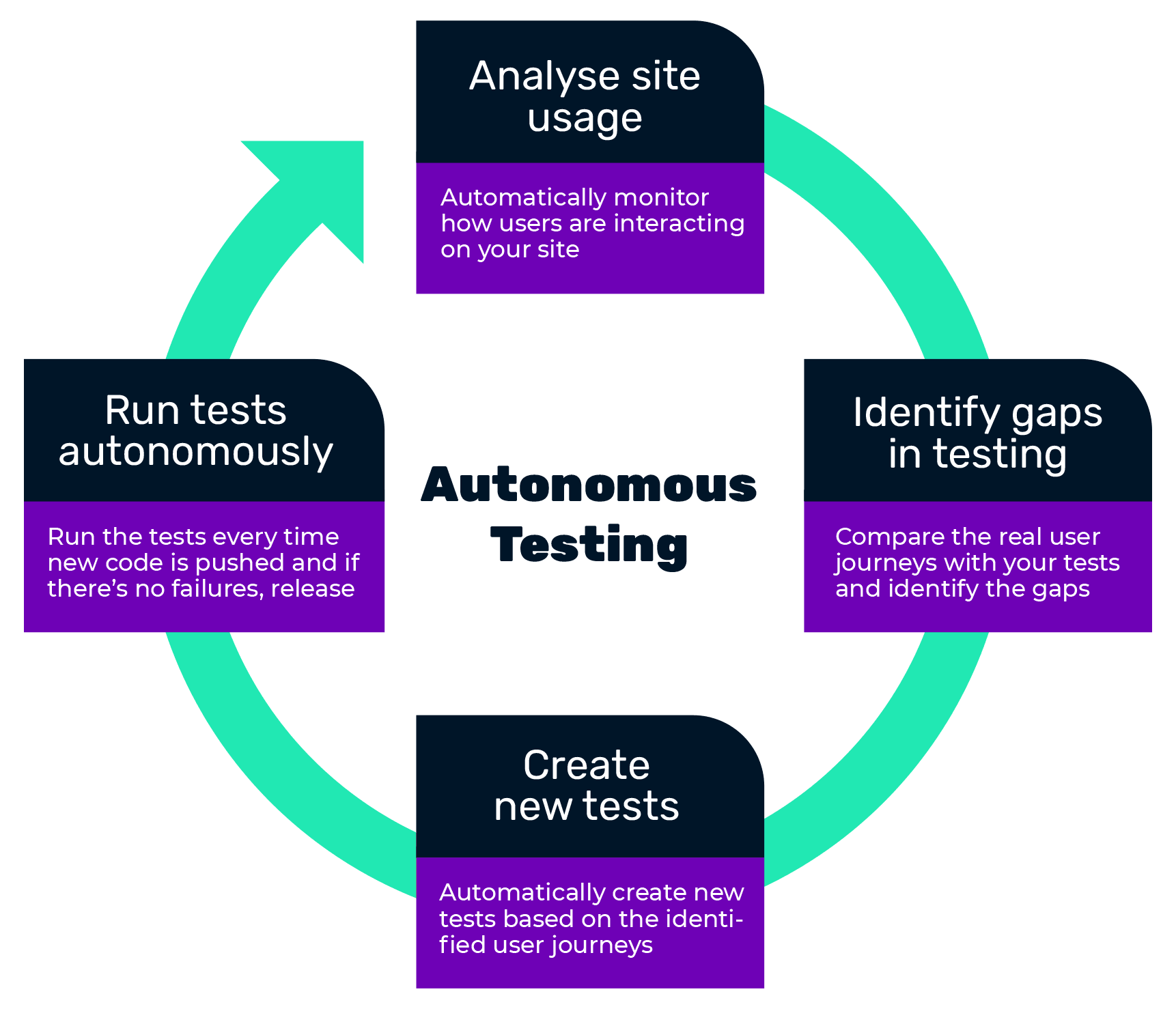
Key Components of Autonomous Testing
The software development life cycle is experiencing a remarkable shift towards autonomous testing as one of its most significant trends. This form of automated assessment employs artificial intelligence (AI) and machine learning (ML) technologies—allowing it to handle all aspects of the test process right from selecting test cases through executing them until finally monitoring their outcomes thoroughly, thereby enhancing overall efficiency and accuracy level same time also relieving human testers from focusing their attention only on low-level mundane tasks.
And lastly, know that autonomous computerized examination comes with these three indispensable constituents:
Test case generation and selection
The first step in autonomous testing is to generate test cases. This can be done using a variety of AI-based techniques, such as:
- Data-driven test case generation: This technique uses data from the application under test to generate test cases. For example, if the application has a database of users, the data-driven test case generator can use this data to generate test cases that exercise all of the different user scenarios.
- Model-based test case generation: This technique uses a model of the application under test to generate test cases. The model can be created manually or automatically using AI. Maximizing software testing efficiency starts with generating a suite of robust test cases that encompass all potential pathways through an application.
Although model-based and data-driven methods can create viable tests, model-based strategies tend to achieve higher coverage rates because they consider all possibilities from end to end. However, once these tests have been formulated, selecting which ones will deliver the highest value becomes essential for successful execution planning. To make this task more manageable than ever before, businesses may avail themselves of various machine learning (ML) algorithms, including decision trees and support vector machines, to sift through the many options and identify the optimal choices.
- Risk-based test case selection: This algorithm selects test cases that are most likely to uncover defects. The risk of a test case can be determined by factors such as the complexity of the test case, the importance of the functionality being tested, and the history of defects in the application.
- Coverage-based test case selection: This algorithm selects test cases that cover all of the different paths through the application. This can help to ensure that the application is thoroughly tested, even if the test cases are not risk-based.
Test execution and monitoring
Once the test cases have been selected, they need to be executed. This can be done using automation tools and frameworks. Automation tools can automate the execution of the test cases, while automation frameworks can help to manage the test execution process.
The smooth running of testing hinges on efficient test execution process oversight. To achieve such quality control management effectively, leverage real-time monitoring and feedback systems and established report-building processes – they offer invaluable insight into progression throughout every step in testing endeavors.
Test result analysis and reporting
Upon the successful enactment of the diagnostic evaluations, a rigorous dissection of the resulting data becomes paramount. This intricate process can be facilitated with the assistance of analytical tools dictated by Artificial Intelligence principles. Such AI-governed devices are adept at discerning flaws inherent in the software under scrutiny and recognizing patterns and trends within the amassed data.
The consequential data originating from the diagnostics must be relayed to the assembly of software developers with utmost precision. This can be achieved by harnessing many reporting tools specifically designed for the task. These tools play a crucial role in delivering the diagnostic findings to the developer team in a manner that is not only crystal clear but also concise.
The paradigm of self-directed evaluation emerges as an imposing apparatus, wielding the might to dramatically bolster the exactness and swiftness of diagnostic undertakings. By endowing the comprehensive diagnostic scheme with the boon of mechanization, Self-Directed Scrutiny can emancipate human evaluators from the constraints of hands-on involvement, facilitating them to channel their vigor towards tasks of strategic consequence. Such a strategy can expedite the commodity's ingress into the marketplace, uplift the caliber of standards, and, paramountly, pare down the related expenditures.
Below is a litany of the boons proffered by self-directed evaluation:
- Augmented productivity: Self-directed evaluation can mechanize the complete testing course, spanning from the generation and selection of test scenarios to the execution and surveillance of tests. This can liberate human evaluators to concentrate on more strategic endeavors, like designing tests and interpreting test outcomes.
- Amplified precision: Self-directed evaluation can employ AI and Machine Learning to pinpoint defects in the application that might elude human evaluators. This can guarantee a thorough examination of the application prior to its deployment into the production environment.
- Decreased expenditures: Self-directed evaluation can slash the financial burden of testing by automating the evaluation process. This not only liberates human evaluators to concentrate on more strategic endeavors, but also lessens the demand for pricey test automation implements.
If you're on the quest for an avenue to boost the productivity, precision, and cost efficiency of your testing procedure, then self-directed evaluation offers a stellar solution.
SalesForce and Autonomous Testing
In the grand spectrum of cloud-facilitated customer relationship management (CRM) software, Salesforce indisputably carves a commanding niche. The platform streamlines enterprise-level processes, assisting businesses across all industries and of varied scale in cementing robust bonds with their clienteles, optimizing sales automation, and subsequently catalyzing growth. With escalating intricacies in Salesforce applications, the exigency for automated evaluation has taken a prominent stance in today's technology-driven business world - cue the advent of Autonomous Testing.
Conceptualized within the realm of software testing, Autonomous Testing capitalizes on the groundbreaking advancements in Artificial Intelligence (AI) and Machine Learning (ML). These technologies equip the autonomous testing software to independently pinpoint and initiate test cases, fabricate test data, and furnish comprehensive reports on the outcomes of the tests - all sans human intervention. This hands-off approach liberates Quality Assurance (QA) teams from the routine monotony, paving the way for them to dedicate their efforts towards more strategically significant tasks like conceptualizing fresh test cases and dissecting test outcomes.

Adopting Autonomous Testing for Salesforce applications garners a multitude of benefits. At the outset, it enhances the quality of Salesforce applications by detecting and rectifying flaws at the nascent stages of development. Furthermore, it drastically reduces the time spent on application testing, thus allowing QA teams to allocate their bandwidth towards other important duties. Lastly, by automating repetitive tasks, Autonomous Testing significantly boosts the efficiency of the Salesforce development process.
The tech market is brimming with a variety of Autonomous Testing tools tailored for Salesforce applications. The list of top contenders include:
- AutonomIQ
- Functionize
- TestIO
- Tricentis
When making a choice of the autonomous testing tool for Salesforce, it is crucial to take into account the unique requirements of your organization. Factors worth considering encompass the scale and intricacy of your Salesforce applications, budgetary constraints, and the degree of automation you aspire to achieve.
In a nutshell, Autonomous Testing emerges as a potent instrument that assists organizations in enhancing the quality, minimizing the time, and amplifying the efficiency of Salesforce testing. Therefore, if elevating the quality of your Salesforce applications is a priority, Autonomous Testing is an invaluable resource to contemplate.
Advantages of Autonomous Testing
Artificial intelligence (AI) and machine learning (ML) are at the helm of a new software testing technique- autonomous testing. This method produces several benefits during this process such as:
Improved efficiency in testing processes
- Faster test case generation and execution: Autonomous testing tools can automatically generate test cases based on the software's code and behavior. This can significantly reduce the time it takes to create and execute test cases.
- Reduced manual effort and resource allocation: Autonomous testing can automate several dull and time-consuming tasks in testing, including test case execution, data preparation, and reporting. Consequently, this liberates human testers to concentrate on more innovative and strategic responsibilities.
Enhanced accuracy and reliability of test results
- Reduced human error and bias: Autonomous testing tools can eliminate human error from the testing process. This can lead to more accurate and reliable test results.
- Consistent and comprehensive test coverage: Autonomous testing tools can execute tests more consistently and comprehensively than human testers. This can help to ensure that all aspects of the software are tested thoroughly.
Cost-effectiveness and time savings
- Reduction in overall testing time: Autonomous testing can significantly reduce the overall time it takes to test software. This can lead to faster time to market and increased productivity.
- Optimization of resource utilization: Autonomous testing can help to optimize the use of testing resources. This can lead to cost savings and improved efficiency.
Ready for an upgrade from old school manual testing? Autonomous testing may be just what your business needs! Cutting edge automation tools offer numerous benefits like enhanced efficiency increased accuracy levels improved reliability rates as well as cost effectiveness measures that could potentially save money in the long run. Its well worth considering this impressive option to improve your operations!
Here are some additional benefits of autonomous testing:
- Increased agility: Autonomous testing can help organizations to respond more quickly to changes in the market or customer requirements.
- Improved quality: Autonomous testing can help to identify and fix defects earlier in the development lifecycle, which can lead to higher quality software.
- Reduced risk: Autonomous testing can help to reduce the risk of software failures, which can save organizations money and reputation.
Autonomous testing is a viable option, if you are looking for a way to improve the efficiency, accuracy, reliability, and cost-effectiveness of your software testing.
Challenges and Limitations of Autonomous Testing
In software examination, the prospect of autonomous testing carries a refreshing whiff of novelty. It possesses the latent capacity to render a paradigm shift in the efficiency and precision of the testing procedures. However, on its path to widespread acceptance, it is besieged by a medley of complex impediments and constraints that call for immediate attention.
A significant hurdle that takes center stage is the absence of domain understanding in AI algorithms. To germinate effective testing, autonomous testing apparatuses must intuitively understand the domain in which they are being employed. However, this proves to be daunting, particularly in intricate domains where the states are not merely large in number but equally diverse.
Another formidable challenge springs from the rigidity of handling multifaceted scenarios. Autonomous testing mechanisms often falter when confronted with scenarios that confluence multiple interlocking components. This could precipitate a cascade of false positives and negatives, as well as unobserved defects, diminishing the efficacy of the testing.
Lastly, the problem of maintaining an equilibrium between mechanization and human intervention exists. Autonomous testing systems, while being clever at spawning tests, might falter in their capability to detect all glitches. The human touch, thus, still holds a pivotal role in scrutinizing test outcomes and spotting any overlooked defects that might have slipped past the watchful eyes of the autonomous contraption.
Despite these formidable hurdles, the potential of autonomous testing as a trailblazing approach to software assessment remains unscathed. It still holds the promise to improve efficiency and precision significantly. As the technology weaves its way forward, it's plausible that these hurdles will be surmounted, paving the way for the broader acceptance of autonomous testing.
Specific challenges and limitations include:
- Lack of domain expertise in AI algorithms
- Difficulty in handling complex scenarios
- Balancing automation with human intervention
Strategies for addressing these challenges include:
- Developing AI algorithms that are more domain-aware
- Using machine learning to generate tests for complex scenarios
- Developing tools that help to automate the testing process
- Training human testers to work with autonomous testing systems
Visualize, if you will, the breathtaking landscape of tomorrow sprinkled with the electrifying glimmers of autonomous testing's unbounded possibilities. It's not a mere whisper on the wind anymore - it's an undeniable reality, gaining momentum with each passing nanosecond. With the robust gears of technological innovation ceaselessly turning, churning out new advancements like clockwork, the proliferation of autonomous testing is not just a potentiality but a preordained certainty.
Picture this - a world where software is no longer subject to the humdrum scrutiny of manual testing but instead is the beneficiary of the incredibly agile, relentlessly precise, and ruthlessly efficient methodology that is autonomous testing. This paradigm shift, my friends, promises to catapult the process of software vetting into a new era where accuracy isn't merely desired but assured. And efficiency? It's not just a goal but a guaranteed outcome.
In essence, the autonomous testing of tomorrow stands on the precipice of revolutionizing our understanding of quality assurance. The future is no longer a distant horizon but a tangible reality brought within our grasp by the transformative power of autonomous testing. So, fasten your seat belts, folks - for we are on an exhilarating journey to a promising new dawn in software validation.
Best Practices for Implementing Autonomous Testing
In the ebb and flow of technologically-driven epochs, the emergence of autonomous testing propels itself onto the stage as an irrefutable prodigy, holding the promise to morph the very fabric of the software development lifecycle, rendering it into an avant-garde tapestry of digital craftsmanship. Furthermore, this AI-infused approach seeks to mechanize the evaluative phase of software creation, promising a significant uptick in organizational adeptness, pinpoint accuracy, and prolificacy.
As organizations venture into the labyrinth of autonomous testing, they'd be well-advised to follow a constellation of best practices, which serve as a beacon amidst the often perplexing maze of machine automation. Such best practices encapsulate the following:
- Ensuring proper training and expertise in AI/ML: Autonomous testing, being an offspring of artificial intelligence and machine learning, demand its manipulators to possess a solid foundation in these revolutionary technologies. Hence, an elite cohort of engineers and testers, well-versed in the lingua franca of AI and ML, becomes an asset of paramount importance.
- Integrating with existing testing processes and tools: The introduction of autonomous testing should be envisioned as a symbiotic relationship, co-existing and co-evolving with the already entrenched manual testing procedures and tools. This synergy ensures that the fruit borne by autonomous testing remains harmonious with the outcomes of its manual counterpart, thus preserving a unified narrative of testing results.
- Continuous improvement and adaptation: Autonomous testing is a rapidly evolving field. As such, it is important to improve and adapt autonomous testing processes and tools continuously. This will help to ensure that autonomous testing remains effective as software development practices evolve.
By following these best practices, organizations can reap the benefits of autonomous testing. These benefits include:
- Increased efficiency: Autonomous testing can automate the testing process, freeing up engineers and testers to focus on other tasks. This can lead to significant increases in efficiency.
- Improved accuracy: Autonomous testing can be more accurate than manual testing. This is because autonomous testing can run tests more quickly and thoroughly than manual testing.
- Increased productivity: Autonomous testing can free up engineers and testers to focus on other tasks, such as developing new features and fixing bugs. This can lead to increased productivity.
In digital code creation and maintenance cycles, the meteoric ascendancy of autonomous testing marks a pivotal evolution. As entities abide by the sterling principles delineated in the preceding exposition, they stand poised to harvest the abundant rewards inherent to autonomous testing. This, in turn, magnifies the operational efficacy, precision, and yield of their endeavors in software genesis and refinement.
Ensuring proper training and expertise in AI/ML
Let's throw an exhilarating party of words, with our spectacle's central star being "Autonomous testing." In this grand extravaganza of innovation, autonomous testing emerges as a gallant knight, armed with the sophisticated weaponry of artificial intelligence and machine learning. This knight doesn't march to battle alone, no sir! The heart of the action is a dynamic, pulsating ensemble of technologists and scrutinizers who've honed their skills in the crucible of these revolutionary technologies.
This merry band of knowledge warriors must go through an exhilarating journey of enlightenment, a comprehensive bootcamp. Here's a sneak peek into the tantalizing subjects they'll delve into:
- The basics of AI and ML
- The different types of AI and ML algorithms
- The use of AI and ML in testing
- The challenges of using AI and ML in testing
Integrating with existing testing processes and tools
Consider how one might harmoniously intertwine the concept of autonomous testing within the pre-existing system of testing methodologies and utilities. Incorporating this autonomous mechanism into the traditional testing arena is critical in ensuring the symbiotic nature of autonomous and manual testing outcomes. As your organization maneuvers through this transition, it might be valuable to ponder over these musings:
- Envision the merger of autonomous testing into the prevailing suite of tests. What could that confluence look like?
- Contemplate how the outcomes generated from the application of autonomous testing might mesh seamlessly with the established collection of test results.
- Delve into how the insights derived from autonomous testing could catalyze to enhance and refine the current testing procedures.
Continuous improvement and adaptation
Autonomous testing is a rapidly evolving field. As such, it is important to continuously improve and adapt autonomous testing processes and tools. This will help to ensure that autonomous testing remains effective as software development practices evolve. To do this, organizations should consider the following:
- How can the autonomous testing process be improved?
- How can the autonomous testing tools be improved?
- How can the autonomous testing process be adapted to new software development practices?
Case Studies and Success Stories
Autonomous testing's skyrocketing ascendance in the software development lifecycle (SDLC) realm is an unmissable, rip-roaring phenomenon. By unleashing artificial intelligence (AI) and machine learning (ML) powers, autonomous testing automates the nitty-gritty of testing procedures, liberating human testers to take on grander, more strategic quests.
Numerous organizations have embraced the autonomous testing revolution, reaping bountiful rewards. For instance, Cox Automotive, an automotive technology titan, harnessed autonomous testing to slash the time required for examining novel features by a whopping 50%! Yet, simultaneously, they witnessed a 20% nosedive in defects surfacing in production.
Another triumphant tale of autonomous testing's prowess unfolds at Smiths Medical, a medical device manufacturing maestro. They employed autonomous testing to elevate their products' quality while accelerating the pace of new product launches. Smiths Medical, too, rejoiced in a downturn in recalls caused by pesky defects.
The radiant impact of autonomous testing on SDLC efficiency and precision is indisputable. By mechanizing the testing procedure, organizations empower human testers to concentrate on grander tasks, like test design and result analysis, culminating in a noteworthy enhancement of software product quality.
Beyond boosting efficiency and precision, autonomous testing can be a veritable treasure trove in terms of cost savings. By putting testing processes on autopilot, organizations can shrink their reliance on manual testers, yielding significant savings, particularly for colossal organizations that regularly churn out software.
The unstoppable ascent of autonomous testing is a huge trend, bestowing bountiful benefits on the SDLC. Organizations can turbocharge efficiency, precision, and cost savings by mechanizing testing processes, establishing autonomous testing as an indispensable tool for software development institutions, regardless of size.
Here are some additional examples of the positive impact of autonomous testing:
- Increased test coverage: Thanks to autonomous testing, we can now scrutinize every nook and cranny of a software's architecture, including those pesky, time-draining segments that folks dread testing manually.
- Faster test execution: By outrunning manual testing, autonomous testing dashes through tests with incredible velocity, slashing the time needed for the software to make its grand debut.
- Improved quality: Autonomous testing boasts a knack for detecting flaws early on in the development rodeo when fixin' them up is a breeze and costs much less.
- Reduced risk: By employing autonomous testing, we can dodge the bullet of dishing out software plagued by defects, thereby shielding organizations from the sting of a tarnished reputation and a drained piggy bank.
To sum it up, autonomous testing's a bona fide game-changer that turbocharges an organization's software development process regarding quality, productivity, and zip. Consequently, you can bet that autonomous testing is gaining traction as an indispensable component of the SDLC for organizations big and small.
Future Trends and Developments in Autonomous Testing
In the ever-dynamic domain of technology, the arena of autonomous testing is undergoing vigorous transformation, poised at the precipice of revolutionizing the multifaceted lifecycle of software development. By integrating the principles of automation into the critical process of testing, enterprises stand on the verge of a new era wherein they can substantially amplify their operational efficiency, pinpoint precision, and overall productivity.
Advancements in AI and ML for Autonomous Testing
In the contemporary technological panorama, Artificial Intelligence (AI) and Machine Learning (ML) prominence is becoming increasingly salient, particularly in autonomous testing. These cutting-edge technological stratagems are being leveraged to architect and refine intelligent testing automation instruments capable of evolving and acclimating to the dynamic modifications inherent in the software landscape.
For instance, consider the application of automation tools enhanced by AI in the realm of test case generation. These sophisticated contrivances not only can generate test cases autonomously, but they can also discern and arrange these cases according to their respective risk profiles, a feature that markedly enhances their efficacy.
Moreover, Machine Learning presents itself as a game-changer in bolstering the precision of the test findings. Test automation tools, imbued with the power of ML, can progressively learn to detect and categorize anomalies in software. This continual learning and adaptation, a distinguishing attribute of ML, presents a quantum leap forward regarding the sophistication and reliability of autonomous testing.
Integration with Other Emerging Technologies
Autonomous testing is also being integrated with other emerging technologies, such as robotic process automation (RPA). RPA is a technology that can automate repetitive tasks, such as data entry and file management.
By integrating RPA with autonomous testing, organizations can further automate the testing process and improve efficiency.
Predictions for the Future of Autonomous Testing
The future of autonomous testing is bright. As AI and ML continue to develop, autonomous testing tools will become more intelligent and capable.
We anticipate that the software assessment paradigm will gravitate towards an increasingly autonomous testing model in the future epoch. This sophisticated advancement is poised to afford corporations a significant enhancement in operational efficiency, precision, and productivity.
The endgame of this transformative shift is that it will be instrumental in enabling organizations to furnish their clientele with software that embodies a more advanced level of quality.
Esteemed projections about the forthcoming advancements of autonomous testing may be articulated as follows:
-
The trajectory of autonomous testing tools is oriented towards an exponential increase in intellectual capacity and versatility. These cutting-edge systems will be imbued with capabilities to acclimatize and learn, responding deftly to modifications in the software landscape. Further, an enhanced ability to discern and hierarchically arrange test cases rooted in risk factor quantification will be at their disposal.
-
Autonomous testing is poised to create a harmonious symbiosis with other avant-garde technological phenomena, such as robotic process automation. This coalition is anticipated to inject further automation into the testing procedure, thus propelling the wheel of efficiency to new heights.
-
Autonomous testing will ascend to the pinnacle of standardization within software testing. This evolution will empower corporations with superior efficiency, precision, and productivity levels, thereby acting as a catalyst in delivering high-quality software to their clientele.
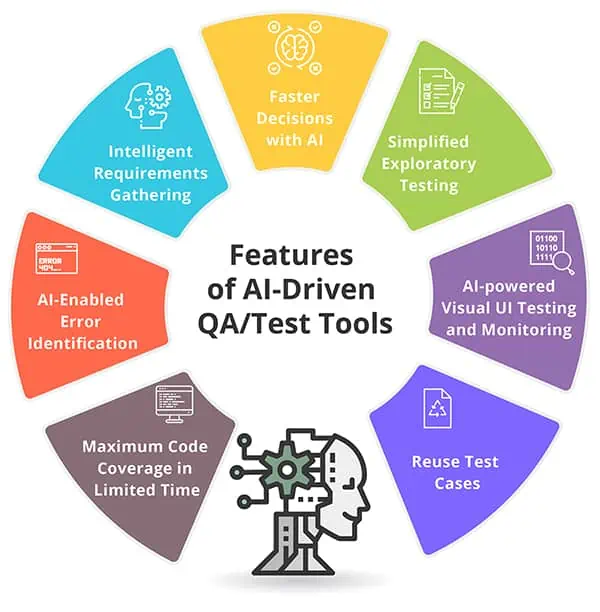
Conclusion
Immerse yourself in the advantages of incorporating autonomous testing into the Software Development Life Cycle (SDLC). The pivotal merits it offers to encompass the following:
- Amplified Efficiency: The liberation of human testers from routine tasks via autonomous testing allows them to concentrate on more intricate and strategic undertakings, such as devising and orchestrating test procedures. This liberation invariably translates into a significant time economy and a consequent surge in productivity.
- Enhanced Precision: Autonomous testing serves as a bulwark against human fallibility. The reason is that autonomous testing instruments can carry out tests with a high level of exactitude and uniformity.
- Augmented Visibility: Autonomous testing tools equip organizations with an in-depth understanding of their software quality. These critical insights can catalyze pinpointing and rectifying defects early in the developmental lifecycle, circumventing exorbitant setbacks and product recalls.
The ascendance of autonomous testing underscores the imminent reality that the future of software testing is inexorably intertwined with automation. Consequently, organizations that adopt autonomous testing will find themselves optimally positioned to thrive in the perpetually evolving software development landscape.
Final Thoughts and Call to Action
The advantages of autonomous testing are an incontestable testament to the compelling power of technology's relentless progress. However, suppose the transformative influence of autonomous testing has not yet graced your Software Development Life Cycle (SDLC) sphere. In that case, I urge you to cast your intellectual net into the bountiful ocean of possibilities it offers. Contemplate, with diligence and discernment, how incorporating autonomous testing could notably amplify the caliber and efficacy of your software creation endeavors.
Indeed, the marketplace is awash with many autonomous testing utilities and services, their diversity and number as vast as the stars in the celestial sky. Therefore, navigating this labyrinth with a keen and discerning eye is paramount, embarking on a comprehensive exploration to pinpoint an instrument ideally suited to your unique constellation of requirements. Upon successfully identifying such a tool, the next indispensable step is to devise a robust and coherent strategy for the seamless fusion of autonomous testing into the fabric of your SDLC.
Embarking on the voyage towards the wholesale integration of autonomous testing should not be viewed as a finite destination but as an ongoing odyssey. The realization of autonomous testing in its full potency is a task that requires patience, diligent effort, and the strategic allocation of resources. Nonetheless, the fruits of this labor hold the promise of considerable reward. By wholeheartedly embracing autonomous testing, you position yourself to elevate the quality and productivity of your software development process, securing a formidable advantage in the fiercely competitive realm of the marketplace.
Let's discuss how we can help you with autonomous or other testing automation. We are just a click away.



